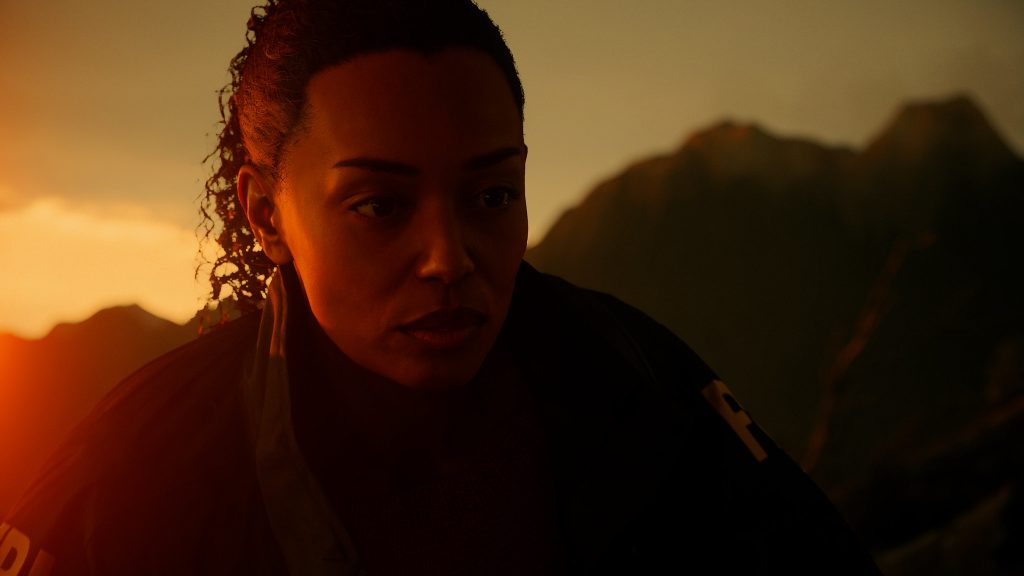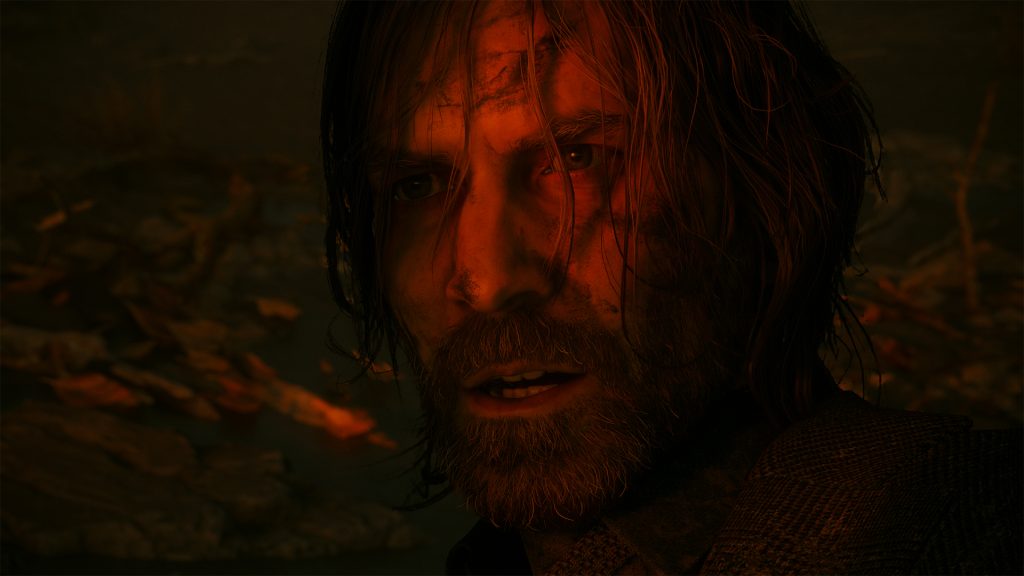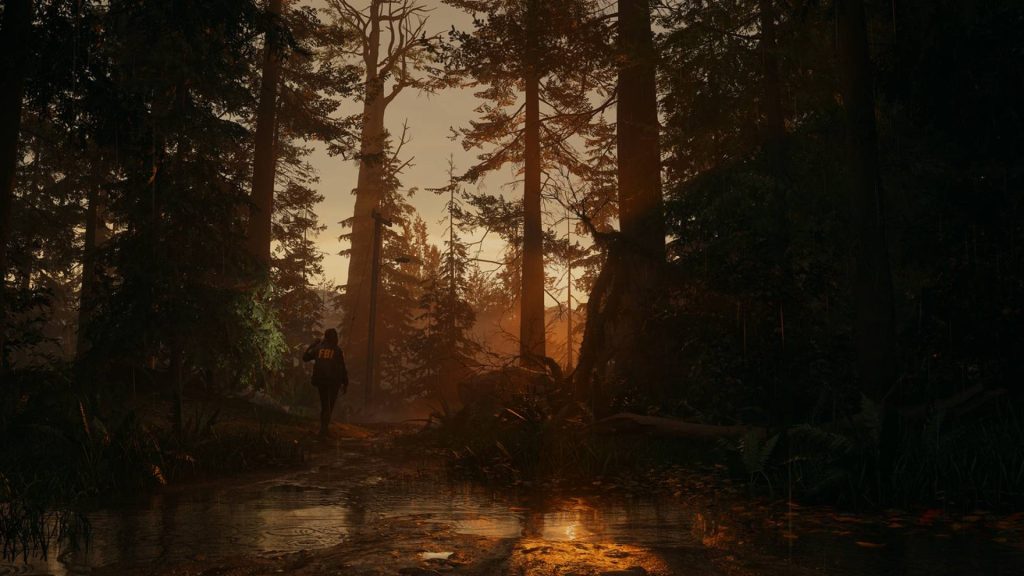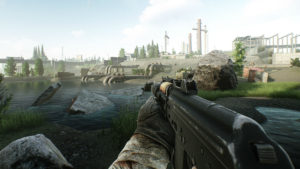
Remedy Entertainment clearly believe in Alan Wake’s potential. The game sold a reasonable three million units when first released in 2010, yet publishers at the time didn’t believe these numbers warranted a sequel hence Remedy’s IP languishing in the doldrums for the best part of a decade. However, the cult favourite Xbox 360 title has become somewhat of a sleeper hit in the years succeeding, with Remedy buying back the publishing rights from Microsoft before remastering and re-releasing for all consoles and PC in 2021.
Whilst inessential for existing fans the updated version brought Alan Wake’s uniquely gloomy atmosphere to a wider audience, and now in 2023 a sequel is finally upon us. Thirteen years in the making according to Remedy Entertainment’s Creative Director Sam Lake, Alan Wake 2 is set to be Remedy’s biggest game to date with a campaign clocking in at more than twenty hours which is double the length of Remedy’s current longest game Control.
The sequel’s length isn’t the only point of ambition either. No, Alan Wake 2 is set to be a story-driven survival horror diversion, with an interweaving dual protagonist storyline combining the unhinged mindset of dimly lit exploration with dynamic detective-led gameplay. Whilst horror and detective fiction might already seem a well-worn genre combination, Remedy Entertainment are promising a creative twist on the formula informed by an extensive catalogue of influential media.
They’ve namechecked plenty of TV shows, books, and movies that have lent influence to Alan Wake 2: TV crime drama True Detective seems most significant, with both protagonists in that show facing dark secrets surrounding the investigations of grisly homicides; Memento and Fight Club are movies unreliably narrated by lead characters who don’t possess a full overview of events; director David Lynch and his iconic Twin Peaks series lend their surrealism to proceedings; the deliberate, methodical set dressing of Coen Brothers’ movies feature heavily too, with influence most notably reminiscent of Fargo.
Alan Wake’s portion of the sequel’s story, one whereby he creeps through an otherworldly New York, is all rain and neon, said to be a fantastical rendition of the Big Apple informed by Martin Scorsese’s neo-noir classic Taxi Driver. Rain, in fact, plays a big part in establishing the mood of Alan’s encounters, a tactic similarly deployed in David Fincher thriller Se7en.

Se7en’s detective duo, whilst initially at odds with each other, evolve to become opposite sides of the same coin; a depiction deployed in Remedy’s pre-release marketing when describing Alan Wake and new player-character FBI agent Saga Anderson. Agent Anderson’s portion of the game sees her land in Bright Falls on the trail of a series of mysterious, ritualistic murders, a premise suggestive of Silence of the Lambs and The X Files. Completing the list of influences is indie game developer Daniel Mullins, and in particular the shifting malevolence in his games Pony Island and Inscryption.
But sticking with Alan Wake and Saga Anderson each occupying a side of the same coin, it seems Alan’s experience will be horror focused whilst Agent Anderson will handle the bulk of the game’s detective work. This structure promises to create an insistent sense of unsettling dread in the player; detective work, by its very nature, requires laser focus on detail, a demand to fixate on minutiae. Horror, in contrast, repels attention to detail, instead forcing those experiencing fear to turn away in revulsion. This metaphorical coin then symbolises the friction between the two genres and is the foundation on which Alan Wake’s sequel is built.
Players are free to switch between the two characters at any time, providing they’ve reached certain narrative bookmarks. This could be between chapters, after Alan or Saga’s story has been played through to completion, or – the most intriguing option – after significant events have been witnessed by either character. This approach gives you – the player – a broader perspective than either character; events in Saga’s Bright Falls could act as foreshadowing for something dreadful about to occur in Alan’s Dark Place, or vice versa.

The narrative complexities in such a system does risk Alan Wake 2’s experience floating into non-sensical. However, grounding both versions of reality are distinct mind maps for each character – mental playrooms in which both will attempt to make sense of the worlds they’re navigating. For Alan, in The Writing Room a chalkboard exists for him to scrawl his inspirations onto to craft new stories, eventually reshaping The Dark Place and progressing his story along. Agent Anderson has a Case Board in a private space dubbed The Mind Place; a board to arrange clues, evidence, and character profiles, a space to connect the dots and progress her investigation further.
And its Remedy’s unique ability to craft niche ideas into mainstream hits that’ll propel Alan Wake 2 beyond the usual survival horror fare. On first glimpse, Alan Wake 2 looks to be borrowing much from Resident Evil 2 and Silent Hill 2’s blueprint. Heck, even the over-the-shoulder perspective is identical to Resident Evil 2 remake, and that’s not even mentioning the scarce resources, scant ammo, inventory management, lurching monsters (requiring deft headshots to takedown), and environmental puzzles.
Play-testers are reporting challenging combat, owing to the superb deployment of these survival horror tropes. Periods of isolated exploration through oppressive atmosphere are interrupted by emergent enemies, with ensuing, ammo-starved gunfights leading to desperate escape attempts to the nearest safe room. Unique to Alan Wake though is the one-two punch of flashlight-gunfire. With batteries being amongst the scarcest of resources, the survival horror tropes are baked into Alan Wake 2 so seamlessly it’s a wonder the first game wasn’t more horror focused to begin with.
Alan Wake 2 embellishes the flashlight mechanic too, most notably in Alan’s exploration through the fictional, non-distinct version of New York he’s been trapped in since the credits rolled on the first game. Here, the torch can illuminate new pathways, unlocking new areas entirely. Alan can absorb the energy from nearby light sources, dispersing it to new locations to dramatically change his environment. This, more than anything, is a nod to Remedy’s prior game Control, and its tendency to shape-shift the environment to befuddle the player.

A survival horror shoehorned into Remedy Entertainment’s penchant for mind-warping is a tantalising prospect indeed. Oh, and Alan Wake 2 is reportedly scary. Very scary. Unexpected shifts in reality, bone chilling sound design and music, and paranoia and despair causing both our protagonists to continually question the world in front of them – combined with established survival horror mechanics – is a sure-fire way to keep players constantly on their toes.
Will Alan Wake 2 be one of the biggest games of the year? Well, it faces stiff competition releasing a week after the highly anticipated Spider Man follow-up. And with other huge games released already this calendar year – Tears of the Kingdom and Starfield to name a few – plus the fact Alan Wake 2 is digital only for now, means Remedy face a challenge to prop Alan and Saga’s upcoming adventure towards the top of the perch come year’s end. However, its unique blend of mind-bending flavour with survival horror tropes, plus an evocative, engaging narrative which doesn’t require knowledge of the first game to get the most out of, Alan Wake 2 certainly has a good chance to end the year as one of the best games.
Note: The views expressed in this article are those of the author and do not necessarily represent the views of, and should not be attributed to, GamingBolt as an organization.














